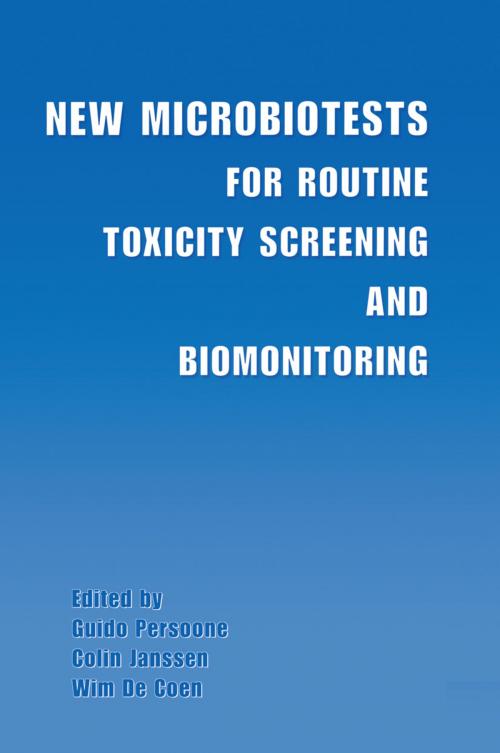New Microbiotests for Routine Toxicity Screening and Biomonitoring
Nonfiction, Science & Nature, Science, Biological Sciences, Microbiology, Environmental Science, Nature| Author: | ISBN: | 9781461542896 | |
| Publisher: | Springer US | Publication: | December 6, 2012 |
| Imprint: | Springer | Language: | English |
| Author: | |
| ISBN: | 9781461542896 |
| Publisher: | Springer US |
| Publication: | December 6, 2012 |
| Imprint: | Springer |
| Language: | English |
The determination of the hazards resulting from the accidental or deli berate contamination of terrestrial and aquatic environments is in most countries still lirnited to the detection and quantification of the suspected pollutants by chemical analyses. Such an approach is unfortunately hampered by the following constraints : the costs as weil as the technical difficulties of analyzing every individual chemical which may be present in the sampies, and the difficulty of assessing the hazards and risks of environmental contaminations from a set of chemical data. During the last decades the scientific and regulatory community has gradually realized that biological methodologies have to be taken into consideration for an ecologically meaningful assessment of the toxicological hazards of contaminants. Effect evaluations obtained with biological techniques indeed integrate the impact of all the contaminants to which living biota are exposed. Bioassays with selected test species representative for the biological commumtles of the environments under consideration, are now applied more or less regularly to determine toxic and genotoxic effects. Taking into account the species specific and chemical specific character of toxicity to biota, the necessity of a «battery of tests» approach with species of different trophic levels is currently also generally accepted and implemented. It is dear that a balanced partnership between chemical, biological, toxicological and microbiological analyses is always the best strategy for generating the broadest information base on environmental hazards.
The determination of the hazards resulting from the accidental or deli berate contamination of terrestrial and aquatic environments is in most countries still lirnited to the detection and quantification of the suspected pollutants by chemical analyses. Such an approach is unfortunately hampered by the following constraints : the costs as weil as the technical difficulties of analyzing every individual chemical which may be present in the sampies, and the difficulty of assessing the hazards and risks of environmental contaminations from a set of chemical data. During the last decades the scientific and regulatory community has gradually realized that biological methodologies have to be taken into consideration for an ecologically meaningful assessment of the toxicological hazards of contaminants. Effect evaluations obtained with biological techniques indeed integrate the impact of all the contaminants to which living biota are exposed. Bioassays with selected test species representative for the biological commumtles of the environments under consideration, are now applied more or less regularly to determine toxic and genotoxic effects. Taking into account the species specific and chemical specific character of toxicity to biota, the necessity of a «battery of tests» approach with species of different trophic levels is currently also generally accepted and implemented. It is dear that a balanced partnership between chemical, biological, toxicological and microbiological analyses is always the best strategy for generating the broadest information base on environmental hazards.















